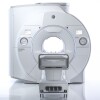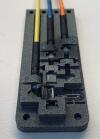Inside one ISO's right-to-repair battle with a leading MR manufacturer
“We have embraced circularity as a way to take back products and to recoup the value, and to recoup the scarce material to avoid [their going] to the landfill, but actually, closing the loop is good business because I don't want our medical equipment to fall in the hands of third parties, who then cannibalize the systems and destroy my spare parts business,” he said, according to transcripts.
The Service Pack 5 update essentially locked servicers without CSIP Level 1 credentials or higher, such as Image Technology Consulting, out of the software menus they had previously been accessing without the manufacturer's knowledge or express consent. It's logical to assume that over time the effect would be end users abandoning the exiled ISOs and bringing their service business to Philips.
New Fully Configured 80-slice CT in 2 weeks with Software Upgrades for Life
For those who need to move fast and expand clinical capabilities -- and would love new equipment -- the uCT 550 Advance offers a new fully configured 80-slice CT in up to 2 weeks with routine maintenance and parts and Software Upgrades for Life™ included.

FDA requires OEMs to provide instructions to third parties
Independent servicers and biomedical engineers have long complained that certain manufacturers withhold necessary installation and service documents or materials. Many of the comments submitted to a 2016 FDA docket on the topic of medical device service pointed to uncooperative OEMs as a top safety concern for ISOs trying to do their jobs.
The Code of Federal Regulations Title 21, Section 820 is the Quality System Regulation (QSR) concerning medical device quality and safety requirements. Section 820.170 states, in part:
- Each manufacturer of a device requiring installation shall establish and maintain adequate installation and inspection instructions, and where appropriate, test procedures. Instructions and procedures shall include directions for ensuring proper installation so that the device will perform as intended after installation. The manufacturer shall distribute the instructions and procedures with the device or otherwise make them available to the person(s) installing the device.
Is it possible that documents Philips classified as CSIP Level 1 (“available only to customers with a valid contract and subject to nondisclosure agreements”) were required by FDA regulations to be accessible to anyone qualified to work on the machines? As the question pertains to the lawsuit filed by Philips, court filings suggest it may be beside the point.
The legal representatives for Image Technology Consulting cited Section 820.170 as part of a motion to dismiss the lawsuit in July of 2022, but were denied in part because the case is concerned with the “acquisition, sale, and use of fake and/or unauthorized IST certificates,” which the court determined does not require interpretation of FDA regulations.
A medical device copyright exemption
In 2021, three years after the release of Service Pack 5 and in the shadow of the COVID-19 pandemic, the Librarian of Congress approved an exemption to the Digital Millennium Copyright Act (DMCA) permitting medical device owners and third parties to access system software necessary for the purposes of diagnosing, maintaining, and repairing the equipment.
The ruling specifically limited DMCA liability for working around OEM access controls to copyrighted software and related data files on lawfully acquired systems, when access is a necessary step in maintaining or restoring a device to work in accordance with its original specifications.
In its lawsuit, Philips asserts the exemption does not shield Image Technology Consulting from liability for two reasons. One, because it does not apply to "unfettered access to Philips’ protected CSIP materials and expressly excludes conduct that modifies software" and two, because the exemption is not retroactive. Whether or not those arguments are persuasive remains to be seen, but other industry stakeholders have sought to make the case that the exemption is unlawful to begin with.
The Medical Imaging Technology Alliance (MITA) and AdvaMed, groups representing the interests of medical equipment manufacturers, sued the Library of Congress over the exemption in February 2022. They claimed that the software protections employed by medical device manufacturers are essential to safeguard patients and their privacy — and that the Library’s rule would allow independent service providers to “piggyback” off the work done by the device’s original developers. The complaints were denied in federal court, but MITA and AdvaMed have appealed the ruling and the case remains pending.
Right-to-repair: The big picture
While medical equipment manufacturers have long sought to frame independent servicers as a patient safety hazard, a 2018 report by the FDA cast doubt on those fears, finding "objective evidence is not sufficient" to justify the implementation of new regulatory requirements on third parties.

As to safety, as noted, there is very little difference in the safety record of OEMs vs In-House vs Third party. Only in the ability to cover it up. The performance bell curve fits all of the above. Both as an instructor for a big OEM and an In-House imaging servicer, I have seen the whole range of performance in both settings, whether hospital, third party or OEM servicers and called it out for praise/condemnation as appropriate. Both have great and bad and every level in between. The advantage is the OEMs can take a crappy warm body and feed it answers from a good support center; they are not willing to do this for just anyone. But they should and do for a fair price. Keys and access, there is not much real cost to provide these electronically, they were needed to develop the product and support their own engineers. The ask currently is really far from reasonable to smaller sites/independent servicers. As a Philips CT instructor said in front of a mixed class I was in, "FDA says we must give them [non-Philips servicers] the tools under FDA, but we don't have to make it easy for them" when asked why the tools were different/more integrated for Philips servicers compared to the limited if even available AIAT level of tool. Some that should have been available under AIAT were very hard to find if they were even provided.
|
|
You Must Be Logged In To Post A CommentRegisterRegistration is Free and Easy. Enjoy the benefits of The World's Leading New & Used Medical Equipment Marketplace. Register Now! |
|



















Steven Ford
Philips and Right to Repair
November 22, 2023 09:59
It's not just 'right to repair' in the sense of fixing something that's broken which is at stake. The restrictions that OEMS place on medical equipment software prevents the owner-operator of the equipment from confirming that their scanner is operating properly. In many cases, a clinic has no mechanism to ensure that the device is operating within specifications or operating safely. This is obviously not a good policy for anyone but the OEM.
Industry veterans know that this is not just a hypothetical risk, but many of us can cite repeated examples where OEMs have deceived the public and covered up failures of scanners under their exclusive service, because there's no possibility of 3rd party oversight nor even oversight by the equipment's owner. This is a health and safety hazard and should be changed.
to rate and post a comment